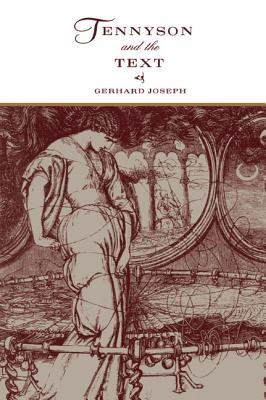
- We will send in 10–14 business days.
- Author: Gerhard Joseph
- Publisher: Cambridge University Press
- ISBN-10: 0521413907
- ISBN-13: 9780521413909
- Format: 14 x 21.6 x 2.1 cm, hardcover
- Language: English
- SAVE -10% with code: EXTRA
Reviews
Description
Gerhard Joseph's study takes its major theme from the weaving figure of The Lady of Shalott, which becomes a kind of parable for the author and his texts. Taking its derivation from the Latin, texere, "to weave," Professor Joseph's focus on poetic texture and a sense of textuality (both in Tennyson's individual works and the larger poetic tapestry of his oeuvre) leads also to a consciousness of his own critical and interpretative weaving, bringing out a new pattern in the fabric of Tennyson's work. This brings together a theory of perception with an analysis of the gendering of Tennyson's characters, and engages with the methodologies of deconstruction, psychoanalysis, and gender theory. The weaving metaphor is used to open up a key theoretical question regarding Tennyson's poetics and the relationship of authorial intention to the "unseen hand" of an all-pervasive textuality.
EXTRA 10 % discount with code: EXTRA
The promotion ends in 20d.09:33:06
The discount code is valid when purchasing from 10 €. Discounts do not stack.
- Author: Gerhard Joseph
- Publisher: Cambridge University Press
- ISBN-10: 0521413907
- ISBN-13: 9780521413909
- Format: 14 x 21.6 x 2.1 cm, hardcover
- Language: English English
Gerhard Joseph's study takes its major theme from the weaving figure of The Lady of Shalott, which becomes a kind of parable for the author and his texts. Taking its derivation from the Latin, texere, "to weave," Professor Joseph's focus on poetic texture and a sense of textuality (both in Tennyson's individual works and the larger poetic tapestry of his oeuvre) leads also to a consciousness of his own critical and interpretative weaving, bringing out a new pattern in the fabric of Tennyson's work. This brings together a theory of perception with an analysis of the gendering of Tennyson's characters, and engages with the methodologies of deconstruction, psychoanalysis, and gender theory. The weaving metaphor is used to open up a key theoretical question regarding Tennyson's poetics and the relationship of authorial intention to the "unseen hand" of an all-pervasive textuality.


Reviews